Showing Spotlights 441 - 448 of 559 in category All (newest first):
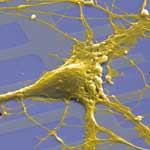 Bionics - a word formed from biology and electronics - has become a quickly expanding research field, exploring ways and materials to bridge the interface between electronics and biology. Basically, there are three levels of biocommunications where electronics and biology could interface: molecular, cellular and skeletal. For any implanted bionic material it is the initial interactions at the biomolecular level that will determine longer term performance. While bionics is often associated with skeletal level enhancements, electronic communication with living cells is of interest with a view to improving the results of tissue engineering or the performance of implants such as bionic ears or eyes. Researchers have worked for more than 20 years on interfacing neurons and silicon devices. Analysis of the electro-physiological activity of neurons could one day enable scientists to develop artificial prostheses for bypassing injured zones and restore brain functionality, or to realize neuro-diagnostic tools for monitoring the reaction of biological neurons to selected chemical species or newly developed drugs. Making another step in this direction, researchers in Europe have now demonstrated the possibility of integrating living neural cells and organic semiconductor thin-films made of a few monolayers of pentacene.
Bionics - a word formed from biology and electronics - has become a quickly expanding research field, exploring ways and materials to bridge the interface between electronics and biology. Basically, there are three levels of biocommunications where electronics and biology could interface: molecular, cellular and skeletal. For any implanted bionic material it is the initial interactions at the biomolecular level that will determine longer term performance. While bionics is often associated with skeletal level enhancements, electronic communication with living cells is of interest with a view to improving the results of tissue engineering or the performance of implants such as bionic ears or eyes. Researchers have worked for more than 20 years on interfacing neurons and silicon devices. Analysis of the electro-physiological activity of neurons could one day enable scientists to develop artificial prostheses for bypassing injured zones and restore brain functionality, or to realize neuro-diagnostic tools for monitoring the reaction of biological neurons to selected chemical species or newly developed drugs. Making another step in this direction, researchers in Europe have now demonstrated the possibility of integrating living neural cells and organic semiconductor thin-films made of a few monolayers of pentacene.
Jun 30th, 2008
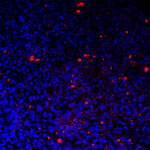 Regenerative medicine is an area in which stem cells hold great promise for overcoming the challenge of limited cell sources for tissue repair. Stem cell research is being pursued in laboratories all over the world in the hope of achieving major medical breakthroughs. Scientists are striving to create therapies that rebuild or replace damaged cells with tissues grown from stem cells and offer hope to people suffering from cancer, diabetes, cardiovascular disease, spinal-cord injuries, and many other disorders. Embryonic stem cells are pluripotent. That means that during normal embryogenesis human embryonic stem cells (hESCs) can differentiate into any of the more than 220 cell types in the adult body. Researchers have now developed a new methodology to enhance the vascular differentiation of hESCs by incorporating growth factor-releasing micro- and nanoparticles in embryoid bodies.
Regenerative medicine is an area in which stem cells hold great promise for overcoming the challenge of limited cell sources for tissue repair. Stem cell research is being pursued in laboratories all over the world in the hope of achieving major medical breakthroughs. Scientists are striving to create therapies that rebuild or replace damaged cells with tissues grown from stem cells and offer hope to people suffering from cancer, diabetes, cardiovascular disease, spinal-cord injuries, and many other disorders. Embryonic stem cells are pluripotent. That means that during normal embryogenesis human embryonic stem cells (hESCs) can differentiate into any of the more than 220 cell types in the adult body. Researchers have now developed a new methodology to enhance the vascular differentiation of hESCs by incorporating growth factor-releasing micro- and nanoparticles in embryoid bodies.
Jun 24th, 2008
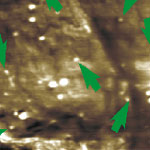 Nanomaterial-based drug-delivery and nanotoxicology are two of the areas that require sophisticated methods and techniques for characterizing, testing and imaging nanoparticulate matter inside the body. Especially the potential risk factors of certain nanomaterials have become a heated topic of discussion recently. Most, if not all, toxicological studies on nanoparticles rely on current methods, practices and terminology as gained and applied in the analysis of micro- and ultrafine particles and mineral fibers. The development of novel imaging techniques that can visualize local populations of nanoparticles at nanometer resolution within the structures of cells - without destroying or damaging the cell - are therefore important. Researchers in the U.S. have now demonstrated that at ultrasonic frequencies, intracellular nanomaterial cause sufficient wave scattering that a probe outside the cell can respond to. This ultrasonic holography technique provides a non-invasive way of looking inside a cell.
Nanomaterial-based drug-delivery and nanotoxicology are two of the areas that require sophisticated methods and techniques for characterizing, testing and imaging nanoparticulate matter inside the body. Especially the potential risk factors of certain nanomaterials have become a heated topic of discussion recently. Most, if not all, toxicological studies on nanoparticles rely on current methods, practices and terminology as gained and applied in the analysis of micro- and ultrafine particles and mineral fibers. The development of novel imaging techniques that can visualize local populations of nanoparticles at nanometer resolution within the structures of cells - without destroying or damaging the cell - are therefore important. Researchers in the U.S. have now demonstrated that at ultrasonic frequencies, intracellular nanomaterial cause sufficient wave scattering that a probe outside the cell can respond to. This ultrasonic holography technique provides a non-invasive way of looking inside a cell.
Jun 23rd, 2008
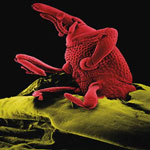 The demand for antimicrobial coatings is growing at a fast pace. In the U.S. alone, the market for these products is expected to grow from $175 million in 2005 to over $550 million in 2012. This market is not only driven by the urgent need of hospitals to reduce infections, although it would appear that they need it most: the U.S. Centers for Disease Control and Prevention (CDC) estimates that the infections acquired in hospitals alone affect approximately 2 million persons annually. In the U.S., between 44,000 and 98,000 people die every year from infections they picked up in hospitals. With a growing concern about the role of contaminated surfaces in the spread of infections such as SARS and MRSA, antimicrobial surfaces have become popular in such areas as consumer products, public spaces such as schools and offices, and public transportation. While many conventional antibacterial coatings release their antimicrobials over time (either controlled or uncontrolled) and thereby lose their antimicrobial efficiency, researchers have now developed a unique multifunctional biomimetic material comprised of carbon nanotubes, DNA, and lysozyme that has robust mechanical properties and exhibits excellent long-term antimicrobial activity.
The demand for antimicrobial coatings is growing at a fast pace. In the U.S. alone, the market for these products is expected to grow from $175 million in 2005 to over $550 million in 2012. This market is not only driven by the urgent need of hospitals to reduce infections, although it would appear that they need it most: the U.S. Centers for Disease Control and Prevention (CDC) estimates that the infections acquired in hospitals alone affect approximately 2 million persons annually. In the U.S., between 44,000 and 98,000 people die every year from infections they picked up in hospitals. With a growing concern about the role of contaminated surfaces in the spread of infections such as SARS and MRSA, antimicrobial surfaces have become popular in such areas as consumer products, public spaces such as schools and offices, and public transportation. While many conventional antibacterial coatings release their antimicrobials over time (either controlled or uncontrolled) and thereby lose their antimicrobial efficiency, researchers have now developed a unique multifunctional biomimetic material comprised of carbon nanotubes, DNA, and lysozyme that has robust mechanical properties and exhibits excellent long-term antimicrobial activity.
Jun 10th, 2008
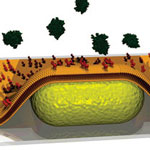 The phenomenon behind many color-based biosensor applications is the excitation of surface plasmons by light - called surface plasmon resonance for planar surfaces or localized surface plasmon resonance (LSPR) for nanoscale metallic structures. Surface plasmon resonance of metallic nanoparticles, in particular gold, has become a popular nanotechnology-enabled technique to build increasingly sensitive and fast biosensors. All the nanostructures used for the biosensing applications have two characteristics: Firstly, they contain certain recognition mechanisms specified to the analyte, for example antibodies or enzymes. Secondly, they are able to generate a distinguishing signal from the analyte and this signal could be generated by the nanostructures themselves or produced by signaling molecules immobilized or contained in the nanostructures. However, proper functionalization remains an issue when it comes to real-world applications, in particular, biological relevant samples such as membrane associated proteins and peptides.
The phenomenon behind many color-based biosensor applications is the excitation of surface plasmons by light - called surface plasmon resonance for planar surfaces or localized surface plasmon resonance (LSPR) for nanoscale metallic structures. Surface plasmon resonance of metallic nanoparticles, in particular gold, has become a popular nanotechnology-enabled technique to build increasingly sensitive and fast biosensors. All the nanostructures used for the biosensing applications have two characteristics: Firstly, they contain certain recognition mechanisms specified to the analyte, for example antibodies or enzymes. Secondly, they are able to generate a distinguishing signal from the analyte and this signal could be generated by the nanostructures themselves or produced by signaling molecules immobilized or contained in the nanostructures. However, proper functionalization remains an issue when it comes to real-world applications, in particular, biological relevant samples such as membrane associated proteins and peptides.
May 15th, 2008
 Alzheimer's disease (AD), a brain disorder named for German physician Alois Alzheimer who first described it in 1906, is a disease that destroys brain cells, causing problems with memory, thinking and behavior. Alzheimer's gets worse over time, and it is fatal. It is also the most common form of dementia. The latest estimate is that 26.6 million people were suffering from Alzheimer's disease worldwide in 2006, and this number will rise to 100 million by 2050 - 1 in 85 of the total population. The latest 2008 data for the US alone estimates that 5 million Americans have the disease, with an estimated increase to 11 to 16 million by 2050. Not only does Alzheimer's have no cure, even its cause is unknown (research has led to several theories that are still being investigated). The onset of AD is usually very slow and gradual and, since there is no test for it, there is no clear-cut line between normal age-related changes and warning signs. An absolute diagnosis of AD can only be determined during the examination of brain tissue, which is usually done during an autopsy. A recent report provides an overview of the promises that nanotechnology brings in research on diagnosis and therapy of AD.
Alzheimer's disease (AD), a brain disorder named for German physician Alois Alzheimer who first described it in 1906, is a disease that destroys brain cells, causing problems with memory, thinking and behavior. Alzheimer's gets worse over time, and it is fatal. It is also the most common form of dementia. The latest estimate is that 26.6 million people were suffering from Alzheimer's disease worldwide in 2006, and this number will rise to 100 million by 2050 - 1 in 85 of the total population. The latest 2008 data for the US alone estimates that 5 million Americans have the disease, with an estimated increase to 11 to 16 million by 2050. Not only does Alzheimer's have no cure, even its cause is unknown (research has led to several theories that are still being investigated). The onset of AD is usually very slow and gradual and, since there is no test for it, there is no clear-cut line between normal age-related changes and warning signs. An absolute diagnosis of AD can only be determined during the examination of brain tissue, which is usually done during an autopsy. A recent report provides an overview of the promises that nanotechnology brings in research on diagnosis and therapy of AD.
Apr 11th, 2008
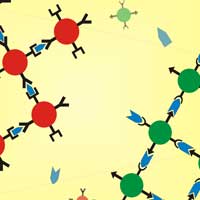 In proteomics research, the study of the structure and function of proteins, chemical as well as physical methods are used to detect proteins. Physical methods are mostly applied after chromatography. They are either based on spectroscopy like light absorption at certain wavelengths or mass determination of peptides and their fragments with mass spectrometry. Chemical methods are used after two-dimensional electrophoresis and employ staining with organic dyes, metal chelates, fluorescent dyes, complexing with silver, or pre-labeling with fluorophores. What these various methods have in common is that they are not very fast, can be expensive, sometimes don't offer the sensitivity required, and are not always easy to handle. Since protein detection can be a powerful tool for diagnosing, prognosing, and monitoring cancers and other medical conditions, researchers are working towards developing detection platforms that can multiple specific molecules from the complex mixture present in serum, and is rapid, sensitive, and simple to administer. Researchers now have demonstrated a simple and rapid way of detecting proteins of interest using nanoparticles. This single step reaction starts with nanoparticle-antibody conjugates that form large aggregates if the intended protein molecules are present in the solution. The large aggregates can be characterized individually by laser scattering and fluorescence.
In proteomics research, the study of the structure and function of proteins, chemical as well as physical methods are used to detect proteins. Physical methods are mostly applied after chromatography. They are either based on spectroscopy like light absorption at certain wavelengths or mass determination of peptides and their fragments with mass spectrometry. Chemical methods are used after two-dimensional electrophoresis and employ staining with organic dyes, metal chelates, fluorescent dyes, complexing with silver, or pre-labeling with fluorophores. What these various methods have in common is that they are not very fast, can be expensive, sometimes don't offer the sensitivity required, and are not always easy to handle. Since protein detection can be a powerful tool for diagnosing, prognosing, and monitoring cancers and other medical conditions, researchers are working towards developing detection platforms that can multiple specific molecules from the complex mixture present in serum, and is rapid, sensitive, and simple to administer. Researchers now have demonstrated a simple and rapid way of detecting proteins of interest using nanoparticles. This single step reaction starts with nanoparticle-antibody conjugates that form large aggregates if the intended protein molecules are present in the solution. The large aggregates can be characterized individually by laser scattering and fluorescence.
Apr 3rd, 2008
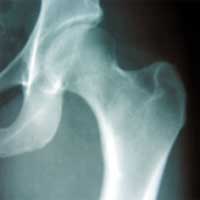 Polymethylmethacrylate (PMMA), a clear plastic, is a pretty versatile material. Plexiglas windows are made from PMMA. Acrylic paints contain PMMA. It also remains one of the most enduring materials in orthopedic surgery where it has a central role in the success of total joint replacement. Being part of a group of medical materials called 'bone cement', its use includes the fixation of biomaterials such as artificial joints to bone, the filling of bone defects and, also, as a drug-delivery system. Beginning in the 1970s, many successful results have been reported for total hip replacement using PMMA cement; however, failures of fixation have also occurred. The fixation strength of PMMA cement to bone is mainly dependent on mechanical interlocking, but it is known that a fibrous tissue layer intervenes between cement and bone - PMMA cement never bonds directly to the bone. One of the problems associated with the conventional types of bone cement used is their unsatisfactory mechanical and exothermic reaction properties. Other problems with PMMA cement include the biological response, leakage of the monomer of methylmethacrylate and a high curing temperature, which can damage cell activity. Ideally, a bone cement material must functionally match the mechanical behavior of the tissue to be replaced, it must be able to form a stable interface with the surrounding natural tissue and be effective in guided tissue regenerative procedures, it should be easy to handle, biologically compatible, non-supporting of microbial growth, and non-allergenic. A novel nanocomposite of carbon-nanotube-reinforced PMMA/HA is a demonstration of how nanomaterials will play an increasing role in the synthesis of next-generation biomedical applications.
Polymethylmethacrylate (PMMA), a clear plastic, is a pretty versatile material. Plexiglas windows are made from PMMA. Acrylic paints contain PMMA. It also remains one of the most enduring materials in orthopedic surgery where it has a central role in the success of total joint replacement. Being part of a group of medical materials called 'bone cement', its use includes the fixation of biomaterials such as artificial joints to bone, the filling of bone defects and, also, as a drug-delivery system. Beginning in the 1970s, many successful results have been reported for total hip replacement using PMMA cement; however, failures of fixation have also occurred. The fixation strength of PMMA cement to bone is mainly dependent on mechanical interlocking, but it is known that a fibrous tissue layer intervenes between cement and bone - PMMA cement never bonds directly to the bone. One of the problems associated with the conventional types of bone cement used is their unsatisfactory mechanical and exothermic reaction properties. Other problems with PMMA cement include the biological response, leakage of the monomer of methylmethacrylate and a high curing temperature, which can damage cell activity. Ideally, a bone cement material must functionally match the mechanical behavior of the tissue to be replaced, it must be able to form a stable interface with the surrounding natural tissue and be effective in guided tissue regenerative procedures, it should be easy to handle, biologically compatible, non-supporting of microbial growth, and non-allergenic. A novel nanocomposite of carbon-nanotube-reinforced PMMA/HA is a demonstration of how nanomaterials will play an increasing role in the synthesis of next-generation biomedical applications.
Mar 25th, 2008
 Bionics - a word formed from biology and electronics - has become a quickly expanding research field, exploring ways and materials to bridge the interface between electronics and biology. Basically, there are three levels of biocommunications where electronics and biology could interface: molecular, cellular and skeletal. For any implanted bionic material it is the initial interactions at the biomolecular level that will determine longer term performance. While bionics is often associated with skeletal level enhancements, electronic communication with living cells is of interest with a view to improving the results of tissue engineering or the performance of implants such as bionic ears or eyes. Researchers have worked for more than 20 years on interfacing neurons and silicon devices. Analysis of the electro-physiological activity of neurons could one day enable scientists to develop artificial prostheses for bypassing injured zones and restore brain functionality, or to realize neuro-diagnostic tools for monitoring the reaction of biological neurons to selected chemical species or newly developed drugs. Making another step in this direction, researchers in Europe have now demonstrated the possibility of integrating living neural cells and organic semiconductor thin-films made of a few monolayers of pentacene.
Bionics - a word formed from biology and electronics - has become a quickly expanding research field, exploring ways and materials to bridge the interface between electronics and biology. Basically, there are three levels of biocommunications where electronics and biology could interface: molecular, cellular and skeletal. For any implanted bionic material it is the initial interactions at the biomolecular level that will determine longer term performance. While bionics is often associated with skeletal level enhancements, electronic communication with living cells is of interest with a view to improving the results of tissue engineering or the performance of implants such as bionic ears or eyes. Researchers have worked for more than 20 years on interfacing neurons and silicon devices. Analysis of the electro-physiological activity of neurons could one day enable scientists to develop artificial prostheses for bypassing injured zones and restore brain functionality, or to realize neuro-diagnostic tools for monitoring the reaction of biological neurons to selected chemical species or newly developed drugs. Making another step in this direction, researchers in Europe have now demonstrated the possibility of integrating living neural cells and organic semiconductor thin-films made of a few monolayers of pentacene.
 Subscribe to our Nanotechnology Spotlight feed
Subscribe to our Nanotechnology Spotlight feed





